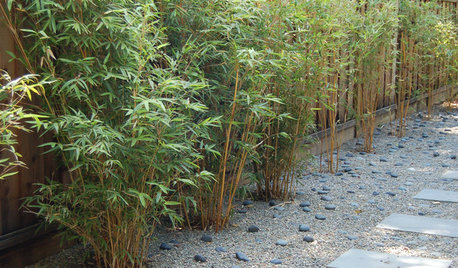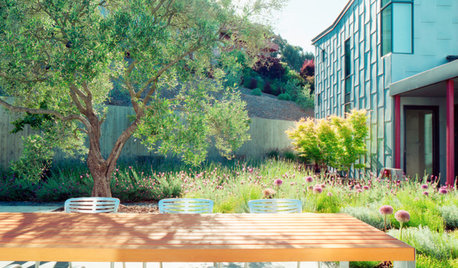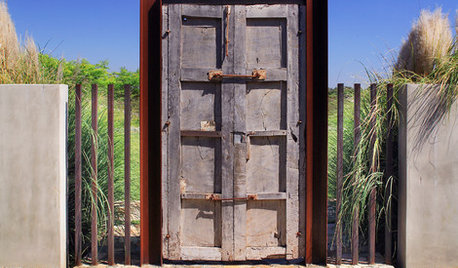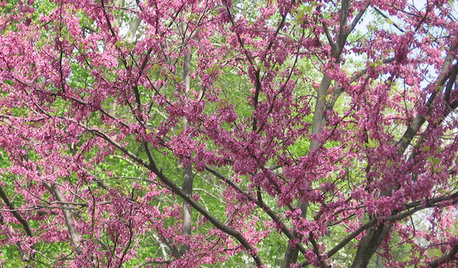Bamboo shooting in Oklahoma
plantmanokc
14 years ago
Related Stories

LANDSCAPE DESIGNSmall Garden? You Can Still Do Bamboo
Forget luck. Having bamboo that thrives on a wee plot just takes planning, picking the right variety, and keeping runners in check
Full Story
GARDENING GUIDESGreat Design Plant: Alphonse Karr Bamboo
Bamboo gets a bad rap in the garden, but this clumping variety creates an exotic landscape look with less aggressiveness
Full Story
DECORATING GUIDESImprove Your Style Fortune With Lucky Bamboo
Serve this versatile plant straight up or with a twist for auspicious living decor that thrives without soil
Full Story
MATERIALSBamboo Sprouts Up in Bountiful Home Uses
When utensils, flooring and even fabric can be made from a single renewable material, it's a design winner
Full Story
KITCHEN DESIGNKitchen of the Week: Small, Creatively Used Kitchen
A food blogger whips up recipes out of a tiny Oklahoma kitchen — and sometimes spills over to the dining room table
Full Story
LANDSCAPE DESIGNGardening for Happy Kids
Foster creativity, self-esteem and more by designing your landscape with a sense of discovery
Full Story
GARDENING GUIDESOh, Deer! 10 Native Flowers That Stand Up to the Herds
Keeping a garden amid hungry deer can be hard, but these plants should fare well
Full Story
HOUZZ TOURSHouzz Tour: A Texas Home Gets a Healthy, Fresh Start
Mold eradication was just the beginning for this Austin family's home on a creek bed — toxins of all kinds now don't make it past the door
Full Story
MATERIALSMesquite: The Brawny Beauty for All Over the Home
Denser than other hardwoods and sporting beautiful coloration, mesquite makes a fine material for flooring, countertops, furniture and more
Full Story
GARDENING GUIDESGreat Design Plant: Eastern Redbud
With romantic pink blooms and heart-shape leaves, this ornamental tree has been inspiring affection since the days of the founding fathers
Full Story


Okiedawn OK Zone 7
scottokla
Related Discussions
Bamboo for NE Oklahoma
Q
Bamboo Shoot Hardening?
Q
New bamboo shoots leaning a lot!
Q
How do you eat your bamboo shoots?
Q
Okiedawn OK Zone 7
impatience_7
Okiedawn OK Zone 7
plantmanokcOriginal Author
impatience_7
plantmanokcOriginal Author
p_mac
soonergrandmom
owiebrain
Okiedawn OK Zone 7
owiebrain
Okiedawn OK Zone 7
p_mac
seedmama
normansooner
impatience_7
Okiedawn OK Zone 7
Lisa_H OK
soonergrandmom
plantmanokcOriginal Author
scottokla
p_mac
scardanelli
Okiedawn OK Zone 7
scottokla
p_mac
owiebrain
scardanelli
owiebrain
Lisa_H OK
Lisa_H OK
Okiedawn OK Zone 7
owiebrain
Okiedawn OK Zone 7
owiebrain
soonergrandmom
klo1
p_mac
Okiedawn OK Zone 7
soonergrandmom
Okiedawn OK Zone 7